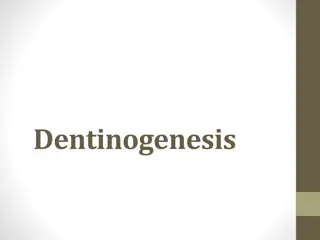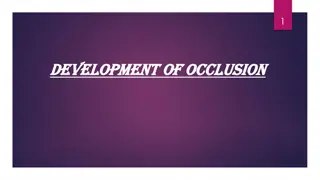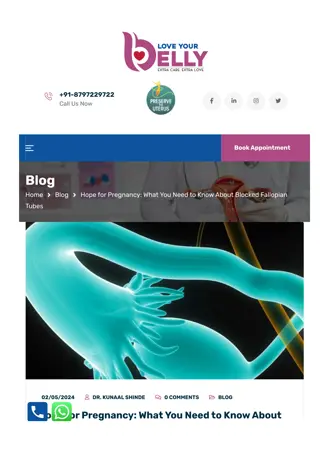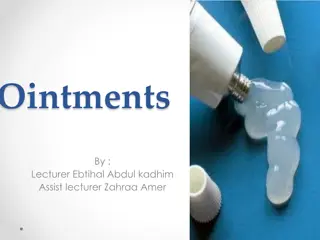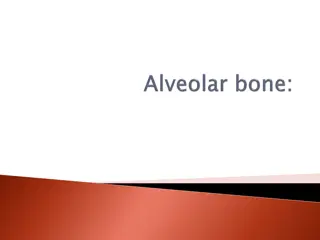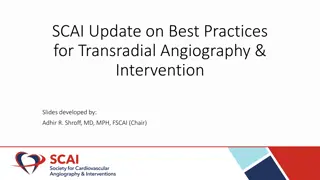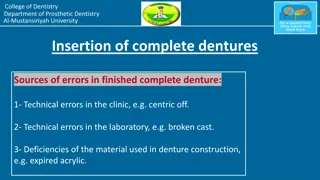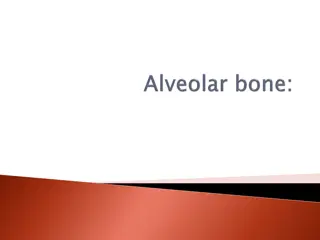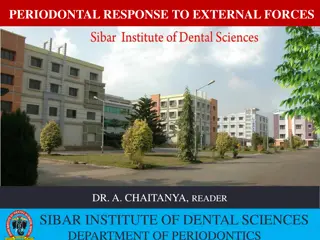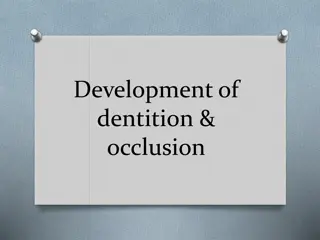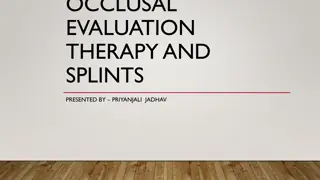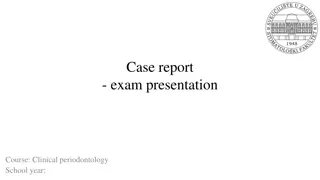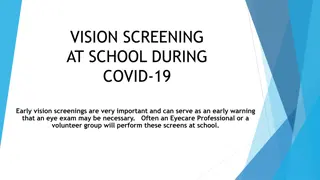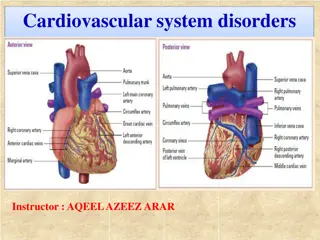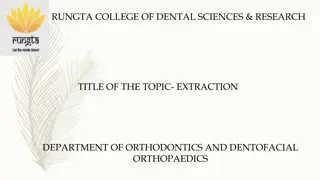
Occlusion and Dental Development in Infants
Discover the concept of occlusion in dentistry, including malocclusion and static vs. dynamic occlusion. Learn about gum pads, natal and neo-natal teeth, and the process of deciduous dentition in infants. Explore images and descriptions to enhance your understanding.
Download Presentation

Please find below an Image/Link to download the presentation.
The content on the website is provided AS IS for your information and personal use only. It may not be sold, licensed, or shared on other websites without obtaining consent from the author. If you encounter any issues during the download, it is possible that the publisher has removed the file from their server.
You are allowed to download the files provided on this website for personal or commercial use, subject to the condition that they are used lawfully. All files are the property of their respective owners.
The content on the website is provided AS IS for your information and personal use only. It may not be sold, licensed, or shared on other websites without obtaining consent from the author.
E N D
Presentation Transcript
Occlusion is defined as the contact relationship of the teeth in function or parafunction Malocclusion- misalignment of teeth and jaws bad bite
Static occlusion contact between teeth when jaw is closed and stationary Dynamic occlusion contacts made when jaw is moving eg Chewing
At birth Gum pads Alvelar process at the time of birth They are pink , Firm and covered by a dense layer of fibrous periosteum They are Horse Shoe shaped and developed in 2 parts 2 portions of Gum pads are separated by dental Groove The gumpad stage the maxillary arch and the mandible arch are not in contact , the mandibular is is distal to the maxillary arch
Gum pads are divided into 10 segments by certain grooves called the transverse grooves Each groove consist of developing deciduous tooth sac
Transverse groove between canine and the 1stdeciduous molar segment is called the Lateral Sulcus Lateral sulci arreuseful in judging the inter arch relationship at a very early stge Lateral sulci in the mandibular arch is normally more distal to that of maxillary arch
Whwen upper and lower gumpads are approximatd there is complete over jet all around Infantile open bite Is considered normal and it helps in suckling
Natal and neo-natal teeth Natalteeth teeth present at the time of birth are called the natal teeth Neo natal teeth teeth erupting during 1stmonth of age
Decidious dentition period Initiation of tooth buds in 1st6 weeks of intra uterine life Primary teeth bein to erupt at age of 6 months Erruption time of primary teeth 2 and half to 3 and half years
Spacing in Decidious Dentition Spacing present is the physiological spaces or developmental spaces They are important for the normal development of permanent dentition Absence of spacesmay cause crowding This space is invariably seen mesial to maxillary canines and distal to mandibular canines
The relation between maxillary ad mandibular priary teeth when in occlusion is such that when each tooth , with exception of Mandibular cecntral incisor and maxillary second molar , occludes with 2 teeth of the opposing arch
Flush terminal plane Mandibular second primary molar has a greater mesiodistal diameter than the maxillary second molar . As a result of this difference in dimensions of the two teeth , the distal surface of these 2 molars are in the same lane , a flush terminal plane is located at the end of the deciduous dentition
Step deviation of the flush terminal Distal Step the distalsurface of Lower second decisious molar being more disatal to that of the upper molar - erupting tooth maybe in Angles Class II occlusion Mesial step -
Over jet condition where the teeth of upper jaw rest at an outward angle causing them to extend far in front of th teeth of the lower jaw normal range is 1-2 mm Over bite when the upper teeth protrude beyond the lower teeth
Deep bite accentuated by the fact that decidious incisors are more upright than their successors Lower incisor edges often contact cingulum area of maxillary incisors
Cross bite Teeth don t line up properly when mouth is closed
Open bite Failure of a tooth or teeth to meet their antagonist in the opposite arch
Scissor bite A bite which involves outward positioning of the upper posterior teeth and inward positioning of the lower posterior teeth

